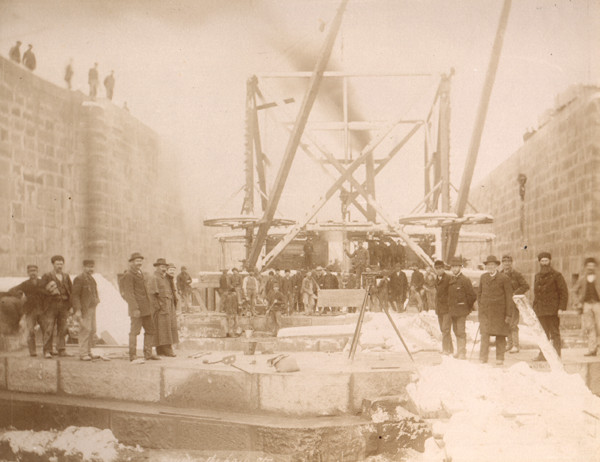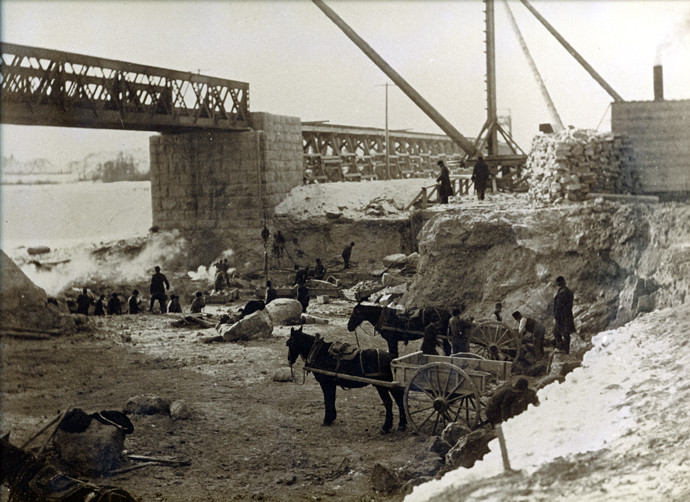 Way back in the 1890s, 400 men worked dug for years to hollow out the spot where the Sault Canal now runs.
Way back in the 1890s, 400 men worked dug for years to hollow out the spot where the Sault Canal now runs.
And, they were apparently pretty careful about it.
As lawyer John James Kehoe remarked in an article for the Canadian Magazine at the time, just one life was lost.
The Sault Ste. Marie Museum offers Kehoe's full account of the construction of the Canadian locks in the story reprinted below:
An article which appeared in an issue of the Canadian Magazine for summer 1894, written by John James Kehoe, a Sault lawyer at the time, tells of the activity that went on when the canal was being built:
The canal was started in 1893 by Hugh Ryan and Company.
The site was through a neck of land jutting out from the mainland which was called peninsula by some and island by others. The point of view depended upon the importance each side gave to the small stream that ran on the north side of the "peninsula" or "island."
Before ground was broken this neck of land was a wild and beautiful place.
There were many small streams there where fishermen caught fine specimens of speckled trout.
Plank bridges thrown across these streams afforded a means for the strolling tourist to reach the Indian fishing village located on the banks of the rapids.
There are now only two streams left, the construction of the ship and water power canals having destroyed the others.
The soil cleared by the contractors consisted of sandy loam mixed with boulders underlaid by Potsdam sandstone.
About 400 men were steadily employed on the excavation.
The facing stone used at the canal was brought from Amherstburg while the backing stones were brought from Meldrum Bay on Manitoulin Island.
Over 600 men were employed at the quarries and a fleet of vessels were required for the transportation of the stone alone.
Over 200 stone masons were needed to do the work of squaring the blocks of stone for the lock walls.
There was a small army of machinists and carpenters and it needed the services of 18 blacksmiths to keep the work going.
The magnitude of the work can better be conceived from the fact that there are 53 teams of horses and 10 miles of railroad track.
The bottom of the canal is like a railway yard and is the scene of constant activity, tramcars carrying stone and concrete being moved and switched constantly.
The stone brought to the yard was hoisted by three traveling derricks mounted on trusses reaching from one wall of the lock to the other and were carried on a track of a gauge of 48 feet six inches, each derrick having four masts two for each wall.
Water power to the extent of 1,000 horsepower is being made available.
This drives not only the electric generators but also the air compressors and these machines are the first of their kind ever to be used in Canada on a public works project.
Two stone crushers were used to reduce the boulders taken from the excavation and the product was used in making the concrete necessary for the construction.
One crusher was capable of handling 15 to 20 tons an hour and the other 25 to 40 tons an hour.
Michael Haney was the engineer in charge who controlled the work of 760 workers engaged in building the Canadian ship canal.
In the entire four years of construction only one life was reported lost.
The fatality was due to the breaking of a derrick boom.
You can also check out LOCAL2's new Friday feature, The LOCAL2 Time Machine, which features historical images and video courtesy the Sault Ste. Marie Museum.
